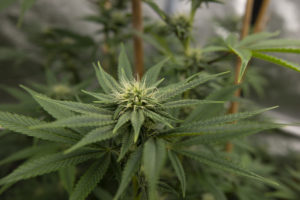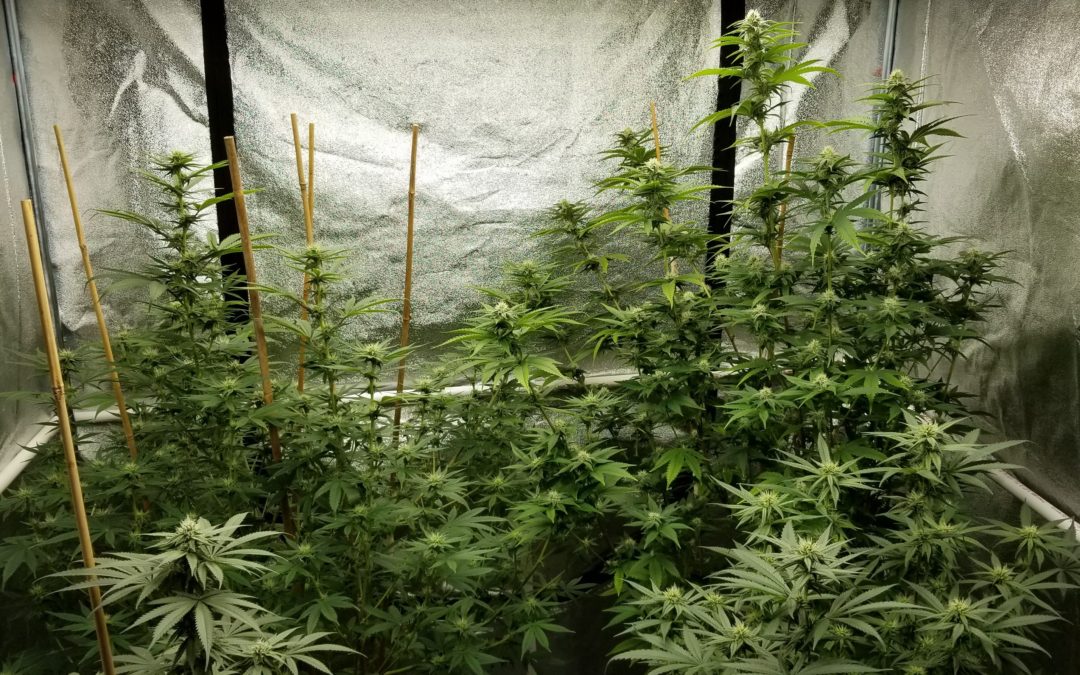Growing at home for the first time can be an exhilarating experience, especially when your state says it’s okay for you to do so. The legalization of medical and adult-use cannabis in certain states allows residents to exercise their right to grow cannabis in their own closets, basements, spare bedrooms, and creative spaces. Before you head over to purchase your dream grow kit, be aware there are many variables that can make or break a successful grow cycle.
Landlords
The State of Oklahoma allows you to cultivate cannabis at home with just a few important rules. Be sure to follow them! You must ask permission from your landlord before you starting your grow. If you rent or lease, your landlord can deny you the right to grow on their property. Don’t spend thousands of dollars on a cultivation setup only to find out you don’t have permission. You might be surprised to know that many landlords openly rent to growers—but they expect and deserve full disclosure.
HVAC and Ventilation
Now that your landlord has agreed to let you start your personal home grow, you’ll want to research the best temperature and humidity that your plants will need through each phase of their grow cycle. Cannabis loves high-intensity light, heat, and water, but you’ll want to ventilate the air to control the temperature and humidity. This will prevent mold and mildew from growing on your plants and mildew contamination inside your home. The correct environmental controls will prevent you from costly repairs or heated discussions with your landlord. Consult your local grow shop for assistance, read books and magazines, and search YouTube for great instructional videos.
Cultivating cannabis will ‘stink out’ the entire neighborhood. Trust me. I know. Don’t be that grower. Use charcoal filters, PCO technology (Photo Catalytic Oxidation), ozone generators, or a combination of processes to eliminate or mask the smell. If neighbors become upset with the odor, local authorities will be called, and harassment will ensue even though you are legally exercising your rights. It’s better not to invite trouble. Be a good neighbor and don’t draw attention to yourself.

Photographer: Jake Baum Grower: Kris “Sparky” Molskness
Growing Styles
Hydroponics, aeroponics, geoponics? Where do you start? Shopping at your local grow shop can be overwhelming for the budding cultivator. Aisle after aisle of colorful bottles of nutrients line the shelves and choosing from the hundreds of products can be daunting. If you find yourself just this shade of confused, I’d advise you to K.I.S.S, Keep It Simple Stupid. It’s easy to get carried away with all of the different products available but start with a simple growing style with easy recipes and nutrients that fit your budget. Each season, you’ll become more familiar with your equipment and can begin to branch out into new techiques and equipment. Growing can be expensive and understanding all of the input costs is crucial.
Integrated Pest Management (IPM)
BUGS, MOLD, and MILDEW! Everyone gets them so be aware. By the time you visually see you have an issue or outbreak the problem is already bad. Visit your local grow store or use Google to search the web and diagnose your problem. Once you have identified the issue, you can set a plan of attack in place to correct it. After you have the pest or pathogen under control, maintain a consistent schedule of treating your plants. Keeping your approach proactive versus reactive will serve your crop much better and your rate of success will be much improved. A reminder that poor environmental control can be the root cause of molds and mildews, so pay attention and manage temperature and humidity as an IPM protocol will only get you so far.
Genetics
When Colorado legalized medical cannabis, you could purchase clones from dispensaries. In those early days, I remember the feeding frenzy of strain collection. The grower community was eager to which varieties we could obtain and what their properties were. The quality of your genetics will dictate the quality of the end product. If you start with inferior genetics, you will end up with an inferior crop. So, do the research and find a reliable resource for your starting material whether it’s seeds or propagated clones.
As a side note, be very careful to vet your source plants. Many diseases and pests are passed along to growers when genetic exchanges occur. When receiving clones/plants be sure to inspect for pests and disease while following a strict IPM intake protocol for all new plants, utilizing a heavy dose of organic pesticides and fungicides.
Lighting
Lighting is a wormhole that you can get lost in while researching. Back in those early days of legalization, we only had access to metal halides and high-pressure sodium (HPS) lighting technology. Now there are hundreds of LED companies and products, not to mention many other types of lighting. Most lights will grow plants but finding the right light for your personal grow has many variables to take into consideration. First up, budget. HPS cost $300 to $500 a unit while some LED equivalents can cost up to $2000. Second is understanding your work space. One type of light may work better than another when considering low ceilings or lack of ventilation options.

Photographer: Jake Baum Grower: Kris “Sparky” Molskness
Resources
There is no better teacher than getting some dirt under your fingernails. Don’t be afraid to learn as you go in your garden. Successes may taste sweet, but failure brings the opportunity for deeper learning. Be sure to arm yourself with as much knowledge as you can. From print publications to online cannabis community forums, you’ll find a plethora of information—and opinions. Get to know the players and read some of the classics of modern cannabis cultivation like ‘Ed Rosenthal’s Marijuana Grower’s Handbook.’
There are thousands of YouTube videos discussing every topic you will ever need for growing. Some may be useful while others not so much. The more you learn from trusted resources, the more you’ll be able to see through flawed advice. YouTube is a great resource for sharing information, but it helps to know if the author is better at social media videos than they are growing cannabis.
ABOUT THE AUTHOR
Ellis Smith is co-founder and Chief Development Officer of American Cannabis Company (ACC). He has more than 20 years of horticulture experience in the specialty cut flower market, operating indoor gardens which helped him understand complex growing systems. As a cannabis grower, he developed an all natural soil medium known as SoHum Living Soil which is used by hundreds of commercial cannabis operations. As CDO of ACC, Mr. Smith is also responsible for the design and construction of more than 1 million square feet of cannabis grow space in the U.S. and Canada.
